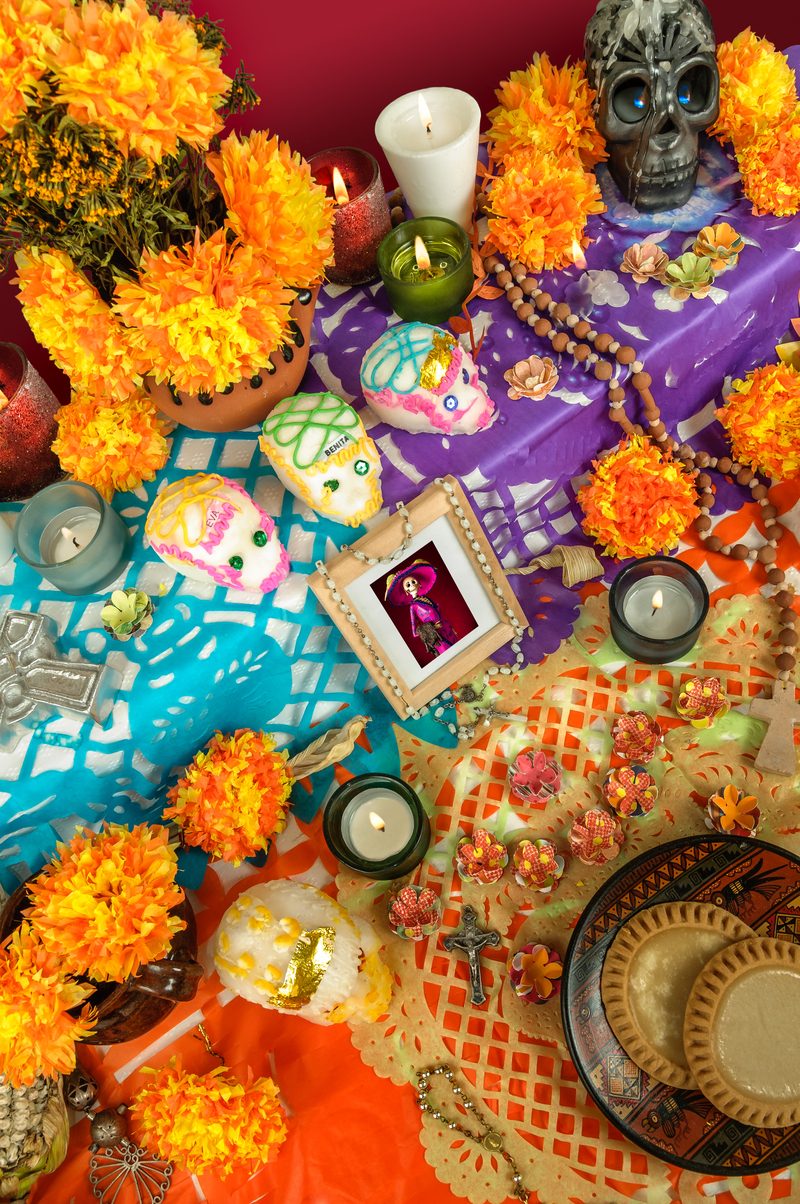Hidden in Plain Sight: Tulip Facts Unboxed
Posted on 02/07/2025
Hidden in Plain Sight: Tulip Facts Unboxed
When you think of spring, tulips likely pop into mind, gracing gardens and fields with flashes of vibrant color. But beyond their charm, tulips hold a treasure trove of fascinating secrets. From their intriguing history to the hidden symbolism and cultivation specifics, these iconic flowers are far more than decorative blooms. In this comprehensive article, we're unboxing some of the most surprising, captivating, and lesser-known facts about tulips. Prepare to be amazed by what lies hidden in plain sight!

The Origins of Tulips: More Than Dutch Delights
Although tulips are closely associated with The Netherlands, their roots (pun intended!) lie elsewhere. Let's unearth their true beginnings.
Tracing Tulip History to Central Asia
- Native Habitat: Tulip species originated in Central Asia, stretching across modern-day Kazakhstan, Uzbekistan, Kyrgyzstan, and beyond.
- Wild Ancestors: The original wild tulip (Tulipa species) is far smaller and less flamboyant than today's hybrids.
- Traveling to Turkey: By the 10th century, cultivated tulips made their way to the Ottoman Empire, becoming a prized flower for sultans.
The tulip was so beloved in Turkey that the Ottoman Empire's "Tulip Era" (early 18th century) celebrated these blooms with festivals, art, and music. They even adorned governmental insignia and palatial gardens.
How Tulips Took Over Europe
- 16th Century Arrival: European botanists and diplomats brought tulip bulbs from Constantinople (now Istanbul) to Vienna, then spread them westward.
- Netherlands' Tulip Mania: In the 1630s, a speculative frenzy known as Tulip Mania swept the Dutch Republic. Prices for some bulbs soared to levels higher than the cost of a house!
- Lasting Influence: The Dutch became expert bulb cultivators, establishing a legacy that persists today.
The Dutch association with tulips remains so strong that the country exports billions of tulip bulbs each year, and Amsterdam hosts one of the world's largest tulip festivals.
Unraveling Tulip Varieties: A Kaleidoscope of Color and Form
If you think all tulips are the same, think again. There are over 3,000 registered tulip varieties, categorized into 15 groups based on bloom shape, flowering time, and heritage.
The Main Tulip Divisions
- Single Early & Late: Classic, cup-shaped flowers in bold hues.
- Double Tulips: Layers of petals give a peony-like appearance for an ultra-lush effect.
- Parrot Tulips: Fringed and feathered petals display a riot of color and texture.
- Viridiflora: Green shading on petals adds intrigue.
- Fosteriana & Greigii: Known for their large blooms and attractive, often mottled leaves.
- Lily-Flowered: Timeless elegance with pointed petals and flared tips.
- Fringed Tulips: Serrated edges create a delicate look.
Bold reds, buttery yellows, creamy whites, and nearly-black purples (like the coveted 'Queen of Night') grace gardens every spring. There's even talk of rare blue tulips, but true blue remains elusive!
Tulip Survival: Adaptation and Clever Deceptions
Nature equipped tulips with strategies for surviving harsh conditions, adding another layer to their story.
Bulbs: Nature's Survival Vessels
- Storing Energy: The tulip bulb holds vital nutrients, enabling it to endure hot, dry summers and frosty winters underground.
- Quick Growth: When early spring warmth wakes the bulb, it grows rapidly to take advantage of brief optimal conditions.
- Dormancy: After blooming, tulips enter a dormant state to recharge for the following year.
Clever Camouflage and Chemical Warfare
- Leaf Markings: Many wild tulips have mottled leaves that blend in with rocky terrain, protecting them from grazing herbivores.
- Natural Toxins: Tulipalin compounds make tulip bulbs toxic to most animals, deterring underground nibblers.
Tulip Symbolism: From Wealth to Love
The hidden meanings behind tulips have shifted across regions and centuries, making them flowers rich in symbolism.
Symbols of Wealth and Power
- Ottoman Royalty: Only the elite could cultivate tulips, a sign of luxury and high status.
- The Dutch Golden Age: Tulip ownership was practically a financial asset and symbolized prosperity.
Modern Meanings: Declarations of Love and More
- Red Tulips: Stand for true love and passionate emotion.
- Yellow Tulips: Symbolize cheerful thoughts and bright friendships.
- Purple Tulips: Denote royalty and admiration.
- White Tulips: Express forgiveness, purity, and respect.
- Pink Tulips: Suggest happiness and good wishes.
*Gift a bouquet of tulips and you're sharing centuries of hidden meaning--often in plain sight!*
Planting and Caring for Tulips: Garden Secrets Revealed
Want to unlock the best performance from your tulip bulbs? Here are some essential facts and pro tips:
The Best Way to Plant Tulip Bulbs
- Timing: Plant in autumn (about 6-8 weeks before the first hard frost).
- Depth: Place bulbs 3x deeper than their height, about 6-8 inches (15-20 cm), pointy side up.
- Soil: Well-draining soil is critical--tulips hate wet feet!
- Spacing: Give each bulb 4-6 inches (10-15 cm) of space for growth.
- Light: Full sun delivers the brightest blooms.
Keeping Tulips Blooming Year After Year
- Deadheading: Remove spent flowers to prevent seed formation and direct energy back to the bulb.
- Leave the Leaves: Wait until foliage turns yellow before removing--it's critical for next year's bloom.
- Fertilizing: Use a balanced bulb fertilizer at planting time and after blossoming.
- Lift or Naturalize: In warmer climates, consider lifting and chilling bulbs each year. In cold climates, some varieties will "naturalize" and return for several springs.
For best results, choose disease-resistant tulip varieties and replant fresh bulbs every few years for non-perennial types. With tulips, even minor tweaks to care routines can produce spectacular displays!
Unusual Tulip Facts You Might Not Know
- Edible (But Not Tasty): In times of famine, such as during World War II, people ate tulip bulbs. However, bulbs can be toxic, and today they're best admired rather than consumed.
- Medicinal Myths: Some 17th-century herbalists believed tulips could treat maladies ranging from coughs to dysentery--modern science disagrees.
- Record Breakers: The world's tallest tulip was recorded at nearly 2.7 feet (85 cm) tall!
- In Space: Dutch astronauts have taken tulip bulbs to the International Space Station to study plant growth in microgravity.
- Color-Changing:* Some tulip petals can change color in response to soil pH or temperature.
Tulip Festivals: A Global Phenomenon
Every spring, cities around the world celebrate tulips with dazzling displays and parades:
- Amsterdam, Netherlands: The Keukenhof Gardens bloom with over 7 million flowers.
- Istanbul, Turkey: Public parks transform with over 30 million tulips in bloom.
- Ottawa, Canada: The Canadian Tulip Festival honors the country's wartime ties with the Dutch royal family.
- Skagit Valley, Washington, USA: Famous for sprawling tulip fields stretching for miles.
Environmental Impact and Conservation
Tulip popularity puts rare wild species at risk. Some tulip species face threats from overharvesting and habitat loss, especially the delicate wildflowers in Central Asia.
- Conservation Efforts: International botanic gardens and local governments are working to protect endangered tulip species and restore natural habitats.
- Seed Banks: Tulip seed banks help preserve genetic diversity in the face of climate change and disease.
- Support Native Planting: Gardeners are encouraged to choose responsibly sourced bulbs and support wild tulip conservation projects.

Frequently Asked Questions About Tulips (Tulip FAQs Unboxed)
Q1: Can you grow tulips from seeds?
A: You can grow tulips from seeds, but it takes up to 5-7 years for a seed-grown plant to flower. Most people opt for bulbs for faster and more predictable results.
Q2: Why do tulips sometimes fail to bloom the next year?
A: Possible reasons include insufficient chilling, cutting leaves too soon, overcrowding, depleted soil, or disease. Replanting with fresh bulbs and adjusting care can help.
Q3: Are tulips safe for pets?
A: No, tulip bulbs contain compounds toxic to cats and dogs. Keep bulbs out of reach of curious pets!
Q4: What is the rarest tulip color?
A: True blue tulips do not exist despite centuries of breeding efforts. The rare 'Queen of Night' is nearly black, while the closest to blue is a deep purple-violet.
Conclusion: The Timeless Wonder of Tulips
The next time you admire a tulip, remember it's more than just a spring stunner. From ancient Central Asian landscapes to the flower beds of the world's most famous gardens, tulips are hidden in plain sight--bursting with secrets and surprises.
Whether you're a seasoned gardener, a flower fan, or an eco-conscious consumer, tulips invite you to explore their unboxed wonders: intricate histories, cultural symbolism, wild variety, and ongoing adaptations.
Celebrate these colorful icons by planting ethically sourced bulbs, supporting conservation, and sharing fascinating tulip facts with others. Every bloom is a testament to nature's brilliance--truly hidden in plain sight!
Unlock more gardening inspiration and fascinating flower facts. Bookmark this page and share the wonders of tulips with your friends and gardening groups!Latest Posts
Peony Heritage: Tracing Symbolism and the Palette of Colours
Revitalize Your Poinsettias to Last Through Winter
Unforgettable Birthday Flowers to Send this Year
The Significance of Birth Flowers: What Yours Indicates About You





